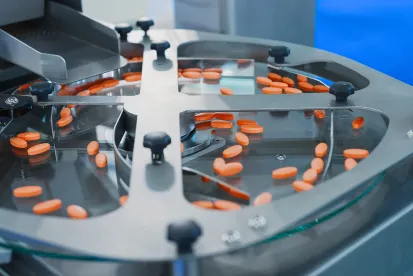The Chinese government’s past efforts to reform its pharmaceutical industry’s regulatory framework can be traced back to the 2015 Opinions on the Reform of Evaluation and Approval System for Drugs and Medical Devices (关于改革药品医疗器械审评审批制度的意见) (2015 Opinions) and 2017 Opinions on Deepening the Reform of the Evaluation and Approval System and Inspiring Innovation of Drugs and Medical Devices (关于深化审评审批制度改革鼓励药品医疗器械创新的意见). To codify these new regimes and measures, in 2019 the Drug Administration Law and its Implementing Regulations (2019 Implementing Regulations) were amended respectively.
With the government implementing more reform initiatives,1 the National Medical Products Administration (NMPA) on May 9, 2022, published new draft Implementing Regulations (中华人民共和国药品管理法实施条例(修订草案征求意见稿)) (Draft Regulations), which will add a total of 101 new articles to the latest version of the Law. The State Council is reviewing all submitted comments pending the exact timeline for finalization of the Draft Regulations. Although the Draft Regulations mainly incorporate several important principles and newly published measures from previous years, pharmaceutical companies may be significantly impacted once the Draft Regulations are enacted officially. This would bring a comprehensive set of rules covering the whole product life cycle of pharmaceutical products, as well as certain changes to some current practices and the consolidation of numerous rules applying to different levels of regulatory paradigms.
NMPA Seeks to Incentivize Innovation
1. Pursue a truly “new” drug
The 2019 Implementing Regulations define “new drug” as a drug “new in China,” but such definition does not exist in the Draft Regulations. The 2015 Opinions have already interpreted “new drug” as “new worldwide” (not registered and sold in and outside China), a stricter interpretation. NMPA’s reform of chemical drug registration beginning in 2016 has adopted this stricter definition. That the Draft Regulations delete the definition could signal the adoption of this strict interpretation of “new drug.”
This change would affect not only drug registration but also the other pharma life cycle management practices, for example, the qualification for an exclusivity period (see below), and patent term extension under the Patent Law (which compensates the Marketing Authorization Holder (MAH) for the patent term loss due to the review and approval of market authorization, with a maximum extension of five years).
2. Continue promotion of clinical value-oriented drug innovation
Since publication of the 2019 Implementing Regulations, several policy documents, including Guiding Principles for Clinical Research and Development of Antitumor Drugs Based on Clinical Value (以临床价值为导向的抗肿瘤药物临床研发指导原则), call for first-in-class or best-in-class research and discourage duplicative investments in the development of several types of cancer drugs. Affected life sciences companies’ financing and IPO plans were delayed due to concerns over any impacts of such policies. The Draft Regulations emphasize the same vision, indicating the regulator may continue pursuing the promotion of clinical value-oriented standards to all therapeutic products.
Furthermore, the Draft Regulations state the government will support the discovery and development of innovative drugs by applying different policy tools in government-supported research projects, financing, procurement, payment standards, and medical insurance, among other things. Considering the government’s aggressive stance on volume-based procurement and pricing negotiation in recent years, it may provide more incentives to address pharmaceutical companies’ concerns surrounding their innovative therapeutic product development investment.
3. Strengthen regulatory data protection and market exclusivity
Since 2002, the Implementing Regulations have contained data protection measures. An exclusive right to data was granted to the manufacturer/seller of a registered drug containing new chemicals, prohibiting others from unauthorized use of such data, and for six years NMPA would not approve others’ applications for utilizing such data (unless such data was obtained independently). Further, NMPA may not disclose such data except for public interest or to prevent improper commercial use.
In 2018, NMPA published draft Implementing Measures for the Protection of Trial Data of Drugs (for Interim Implementation) (药品试验数据保护实施办法(试行)). This draft proposed to grant a six-year exclusive period to new drugs, rare disease drugs (first approved in China) and pediatric drugs (first approved in China) and a 12-year exclusive period to biological products for therapeutic use. The draft was never adopted as official legislation.
According to the Draft Regulations, regulatory data protection is afforded to “some drugs approved for marketing,” the scope of which is not defined. The official text may provide a clearer scope.
As to qualified rare disease drugs and pediatric drugs, the Draft Regulations grant an exclusivity period during which applications of generic manufacturers will not be approved. New pediatric drugs will be given a market exclusivity period up to 12 months, and new rare disease drugs will be given a market exclusivity period up to seven years. The Draft Regulations provide the longest exclusivity period only for these two types of drugs; NMPA may explain how it will determine the specific exclusivity period for a specific drug. Incidentally, the first generic successfully challenging a patented drug will be granted a 12-month market exclusivity period (a fixed term).
As the definition of “new drug” has been defined to cover only those “first worldwide,” market exclusivity is available to “real” innovative drugs, forcing pharmaceutical companies to decide whether to launch the product in China first.
4. Consolidate and integrate past reform documents
With more reform policies introduced after the 2019 Implementing Regulations were promulgated, the Draft Regulations incorporate those reform achievements, for example, patent linkage.2 Establishment of breakthrough therapy designation, conditional approval, and priority review; objection to drug registration conclusions; encouragement of mutual recognition of ethics review results; and acceptance of foreign clinical trial data are all recently published measures in the regime, and all are reiterated and stipulated by the Draft Regulations. All of these policies should provide clarity for pharmaceutical companies to develop and launch their products in China.
On the other hand, there are hurdles or uncertainties that may impact pharmaceutical companies negatively:
|
a) |
Create additional compliance burden to assign IND and NDA approval |
According to the Draft Regulations, change of an investigational new drug (IND) sponsor requires Center for Drug Evaluation (CDE) approval, and CDE may re-issue a clinical trial approval where necessary. This may contradict the industry’s longstanding practice of contractual assignment, followed by the information update on the online platform of the clinical trial. Since CDE may conduct a substantive review on the qualification of the new sponsor, more paperwork and a longer timeline could occur. In addition, assignment of NDA approval to the other company now requires inclusion of all formulations of the relevant drug product.
|
b) |
Navigate cross-border activities under new MAH regime |
NMPA typically does not approve cross-border arrangements (i.e., both manufacturer and MAH must be located in China or outside China simultaneously), although having the MAH and its CMO in different jurisdictions seems more commercially reasonable. The Draft Regulations propose to keep the prohibition on cross-border arrangements at the clinical and registration stage but keep silent on the commercial stage. More clarification on this issue is needed from NMPA. If a cross-border manufacturing arrangement is allowed, this change would be welcome.
However, as long as the drug is marketed in China, all off-shore R&D or manufacturing activities must comply with Chinese laws, regulations, rules, standards, and specifications, according to the Draft Regulations. Although China has incorporated a series of International Council on Harmonisation rules in recent years, this extraterritoriality clause may create additional compliance obligations on foreign pharmaceutical companies. This requirement may demand non-Chinese bio-venture licensors to collaborate with their Chinese licensees more closely to ensure all compliance obligations are fulfilled.
Innovation in life sciences is an engine of the Chinese economy. On 10 May, China’s National Development and Reform Commission released the 14th Five-Year Plan for the bio industry, marking a dedicated plan for this economic pillar. China will continue shaping its regulatory regimes together with its pricing scheme to boost the competitiveness of its pharmaceutical industry. Meanwhile, foreign companies may benefit from China’s emphasis on innovation but also may face unique challenges given local needs. Therefore, company headquarters likely will continue focusing on early alignment with Chinese business units regarding the China strategy in the coming years.
1 See our June 2021 GT Advisory: China on the Move: An Improving Regulatory Landscape with New Challenges Ahead – Genomics and National Security.
2 Patent linkage is perceived to be China’s determination to promote innovation and was first introduced by Patent Law in 2020 and further elaborated in Implementing Measures for the Early Resolution Mechanism for Drug Patent Disputes (for Trial Implementation, 2021, 药品专利纠纷早期解决机制实施办法(试行)), Provisions of the Supreme People's Court on Several Issues concerning the Application of Law in the Trial of Civil Dispute Cases Related to the Patent Rights Pertaining to Drugs under Application for Registration (2021, 最高人民法院关于审理申请注册的药品相关的专利权纠纷民事案件适




 />i
/>i
